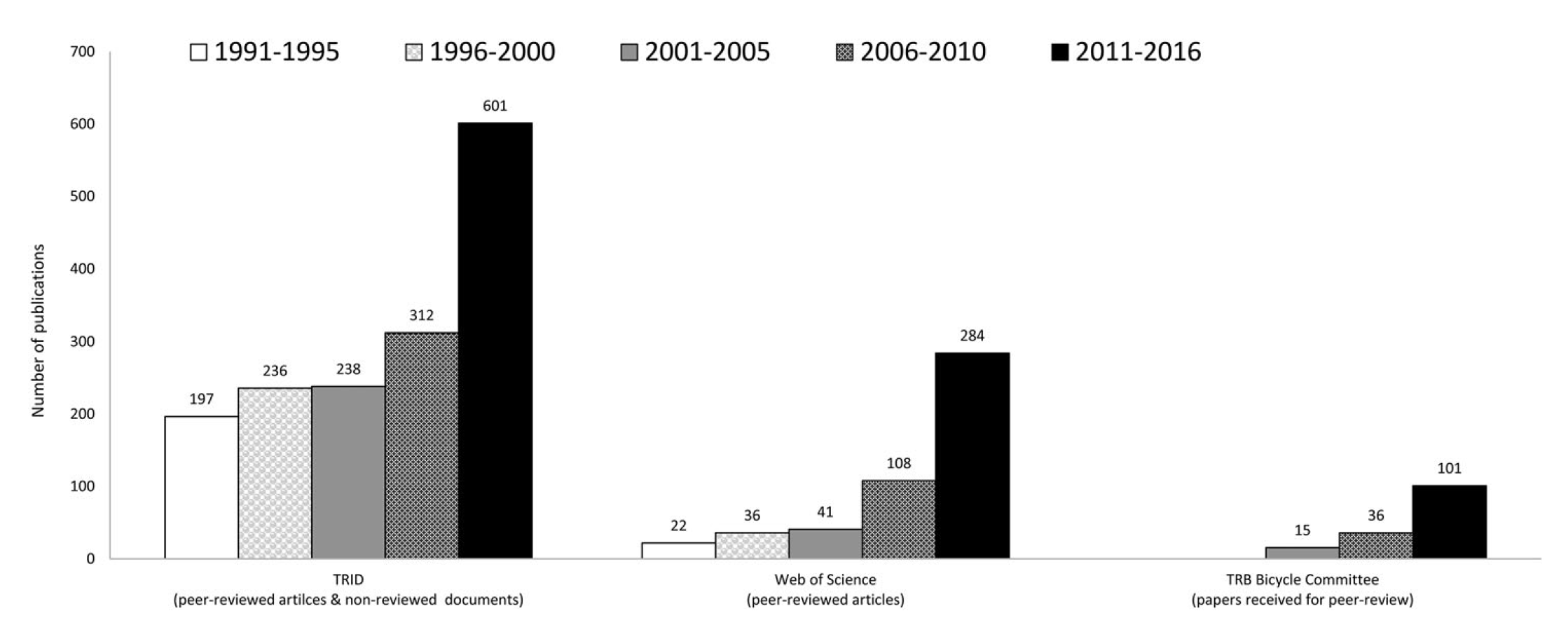DISCOVER YOUR LOCAL BICYCLING COMMUNITY
Find local advocacy groups, bike shops, instructors, clubs, classes and more!
What can the rise of cycling tell us about its future?
Update on 11/27: The blog has been updated to include additional information about the number of e-bikes in the European Union.
Globally, the last two decades have seen an increased recognition of bicycling as a transportation solution that “causes virtually no environmental damage, promotes health through physical activity, takes up little space and is economical, both in direct user costs and public infrastructure.” This recognition and the major tenets supporting increases in bicycling are the focus of John Pucher’s and Ralph Buehler’s recently published article “Cycling towards a more sustainable future” in the November-December 2017 issue of Transport Reviews.
Academic Articles Show Increased Recognition of Bicycling
While bicycling has always been the favored mode of transportation for some, it is a recent phenomenon that it has been studied within mainstream transportation research. Pucher and Buehler summarize this increased attention by looking at published academic studies in three prominent transportation research bodies, finding 3 to 13-fold increases in the number of articles about bicycling since 1990. Popular and academic interest in bicycling is further shown by 3 of the 10 most cited articles in Transport Reviews, an international review journal covering all aspects of transport, being about bicycling.

Average annual number of publications about cycling by five-year periods, 1991–2016. Sources: TRB Committee for Bicycle Transportation, (2017); TRID, (2017); Web of Science, (2017).
In many ways this increased academic interest is a necessity. For most of the past century bicycling was not seen as a legitimate mode of transportation and was something to be marginalized rather than studied. However, through federal government support starting with 1991’s ISTEA transportation bill and leading efforts in northern European countries, the many benefits of bicycling have been recognized. Now, the transportation world is trying to develop the tools to get more people biking safely so that the benefits of bicycling can be realized.
Promising Efforts to Realize the Benefits of Bicycling
Pucher and Buehler’s article does an excellent job of summarizing the increase in the number of people bicycling, the improved safety of bicycling in most countries – and the public policies that have resulted in both. With an international perspective, it is easy to see that the United States still lags other developed nations in its bicycling-related policies and that there is much work to do.
- In 19 examined cities, the largest increases in bicycling levels were in cities that installed integrated networks of protected cycle tracks. The two cities with the most dramatic increases both installed over 180 miles of protected bicycle lanes. According to People for Bikes’ Protected Bike Lane inventory there are fewer than 310 miles of protected bike lanes in the United States.
- In the Netherlands, which has the highest rate of bicycling in Europe and the one of the lowest traffic fatality rates in the OECD, over 75% of urban roads are traffic calmed to speeds of less than 20 mph. In many American states, it is not legal for cities to post speed limits of less than 20 mph. New York City and Boston recently successfully advocated to change state laws so that their local speed limit could be 25 mph.
- E-bikes are significantly contributing to increased bicycling in Northern Europe, China, and other countries. In at least five European countries, more than 10% of bike sales are e-bikes. Between 2006 and 2016, the number of e-bikes in the European Union went from less than 100,000 to more than 8 million. The United States has a patchwork of e-bike laws and they are illegal to operate in some states. The federal law governing the sale of e-bikes does not differentiate between different types of e-bikes based upon speed, size, throttle use or any other factors that are used to classify bicycles in the European Union.
To learn more about these trends of increased research and efforts to improve bicycling, you can read the entire article published in Transport Reviews at http://www.tandfonline.com/doi/pdf/10.1080/01441647.2017.1340234?needAccess=true.